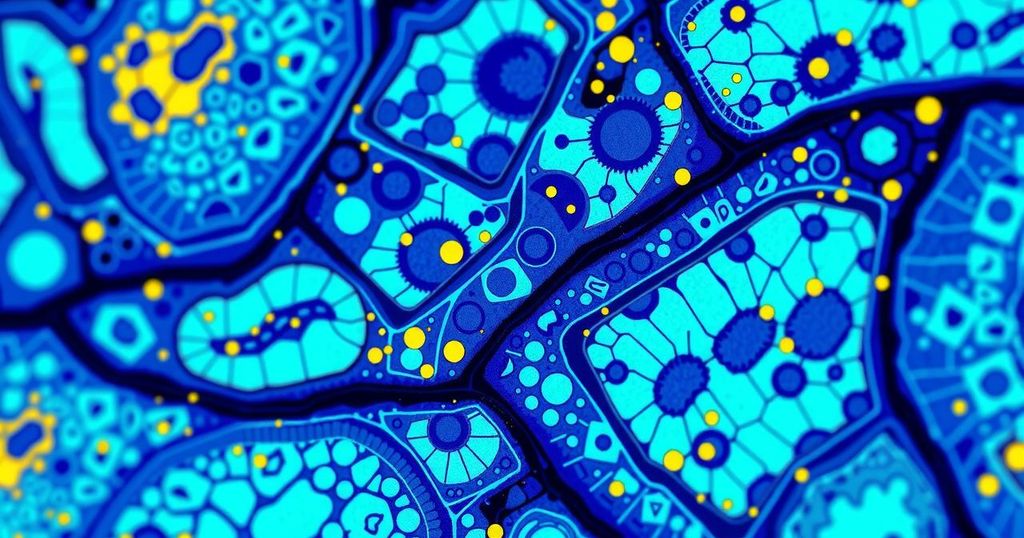How Artificial Intelligence Is Transforming Pathology
AI is revolutionizing pathology by helping pathologists diagnose diseases more efficiently, but challenges like validation and accuracy remain. Recent developments include versatile models like UNI and CONCH, which can automate key processes. Though enthusiasm is high, experts urge caution before these tools are fully integrated into clinical practice.
Artificial intelligence is making waves in the world of pathology, a field crucial for diagnosing diseases, especially cancer. Bo Wang, a computer scientist at the University of Toronto, emphasizes that pathology is vital for accurate diagnosis. However, the demand for pathologists is surging, and many places are grappling with workforce shortages. As a result, the role of pathologists has become increasingly complex, involving more than just looking at tissue samples under a microscope. AI could help ease this pressure by automating and enhancing diagnosis processes.
AI tools can pinpoint suspicious areas in tissue samples and help standardize diagnoses, potentially unveiling insights that the human eye might miss. Wang points out that these tools can significantly boost diagnostic accuracy, efficiency, and offer new pathways for research into large data sets. With digital slides becoming more common in pathology, AI is stepping in to assist with analyzing these images, transforming the way samples are studied. That said, many pathologists still prefer traditional microscopy for its perceived fidelity.
In the past years, advancements in AI, particularly with models like ChatGPT, have sparked interest among researchers looking to apply such tech within pathology. Wang describes this as an exciting, fast-evolving field with daily breakthroughs. Scientists are now developing AI to classify diseases, predict treatment responses, and identify cancerous markers. Faisal Mahmood, a computer scientist at Harvard Medical School, notes that AI could eventually replicate the entire pathology workflow, which includes tasks from analyzing slides to writing reports.
Still, some voices in the field are cautious. Researchers like Hamid Tizhoosh from Mayo Clinic remind us that many AI models lack sufficient validation. They stress that any AI tool used in patient care must deliver dependable and accurate results. There’s a pressing need for clinical reliability before these systems can be confidently integrated into hospitals.
The journey of AI in pathology began with tools for straightforward tasks like cancer detection in breast biopsy samples, but now we’re in the age of ‘foundation’ models. These are versatile tools that can tackle various tasks without needing specific training for each one. For instance, researchers introduced DINOv2, a foundation model aimed at visual tasks in 2023, which underscored that diverse training data often matters more than the sheer quantity.
This led to the creation of UNI, a general-purpose model for pathology, gathering data from over 100 million images. The model apparently demonstrates superior performance in diagnosing cancer metastases and can analyze various tumor types effectively. The expanded version, UNI 2, claims to include even more training data. Another impressive model, CONCH, combines pathology images with textual information from databases, demonstrating the power of multimodal training.
UNI and CONCH are free to access on the model-sharing platform Hugging Face. Researchers have begun using them for diverse purposes, including grading tumors and predicting treatment outcomes. Mahmood is pleasantly surprised by the growing interest in computational pathology, which seems to be gaining momentum. Other organizations, like Microsoft, are developing their AI tools for pathology as well.
Now, teams are creating ‘copilot’ tools based on these models. Mahmood’s PathChat, launched in June 2024, serves as a generalist AI assistant for pathologists, allowing them to interact with uploaded images and automatically generate reports. Meanwhile, Chen’s SmartPath is currently being tested in hospitals in China. Both tools plan to support pathologists by streamlining workflows and directing attention to significant cases while also automating report generation.
Despite the excitement, skepticism remains. Jakob Kather, an oncologist at the Technical University of Dresden, acknowledges the potential of foundation models but cites that they still require regulatory approval before they can be widely implemented. He estimates a two-to-three-year timeline before they could become commonplace in clinical settings.
Concerns about accuracy linger, with experts like Anant Madabhushi at Emory University cautioning against over-optimism in model performance assessments. The cross-validation methods used in some studies, while informative, can yield overly hopeful results and may not represent real-world reliability.
In a recent study, Tizhoosh and colleagues tested various AI models, including UNI and GigaPath, finding them to be less effective than expected in real-world scenarios. In some cases, AI’s cancer identification accuracy fell to levels comparable to random guesses. It’s clear that although we’re seeing thrilling developments in AI’s potential to revolutionize pathology, we must tread carefully as we navigate through this promising but complex landscape.
In summary, AI is rapidly reshaping the landscape of pathology, with emerging tools promising to assist in diagnosing diseases more efficiently. Yet, the skepticism surrounding their accuracy and reliability indicates there’s still a long way to go. As researchers continue to develop these models and tackle validation challenges, the next few years may see AI firmly established in clinical settings, although cautious optimism remains the order of the day.
Original Source: www.nature.com




Post Comment